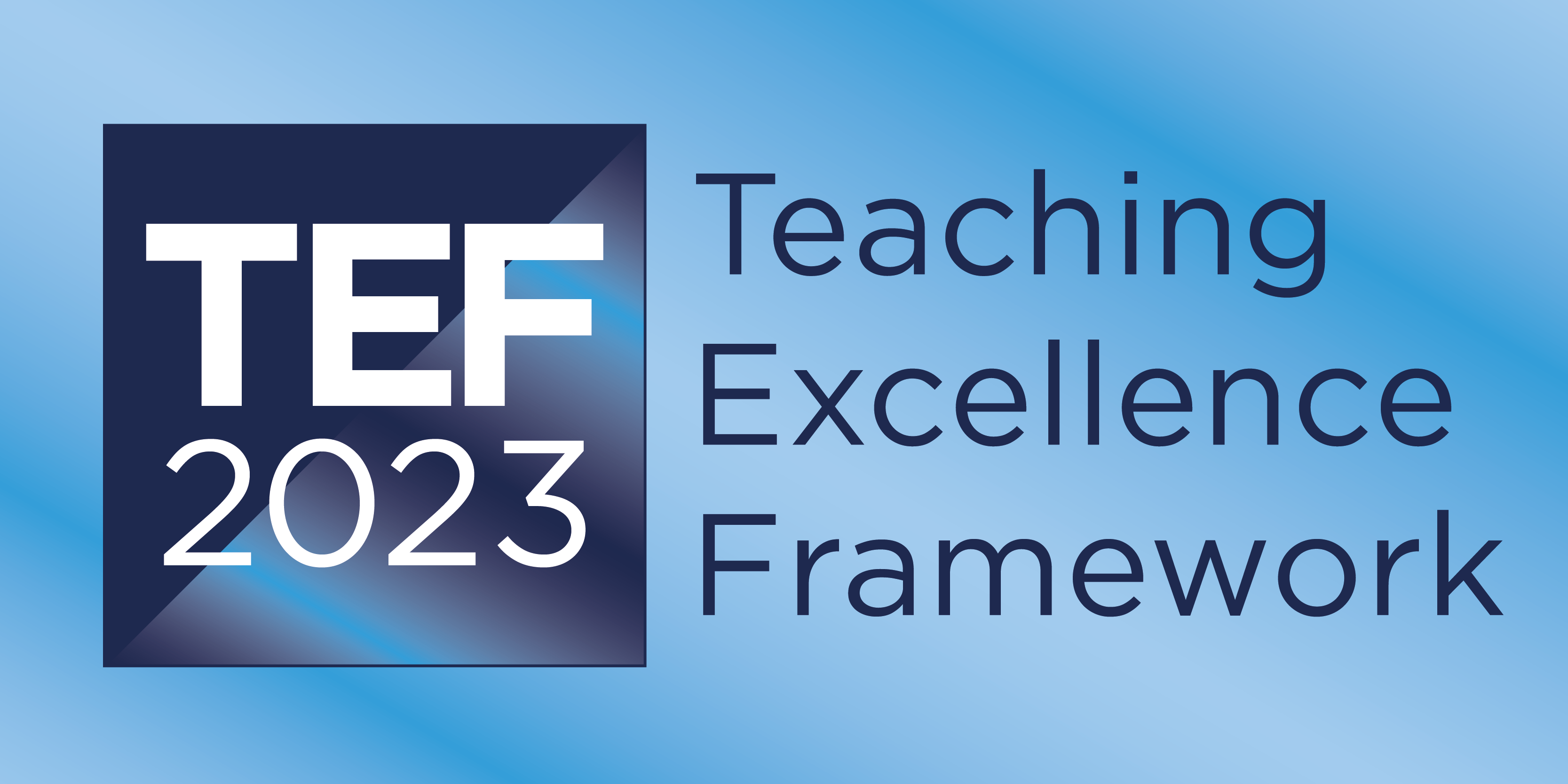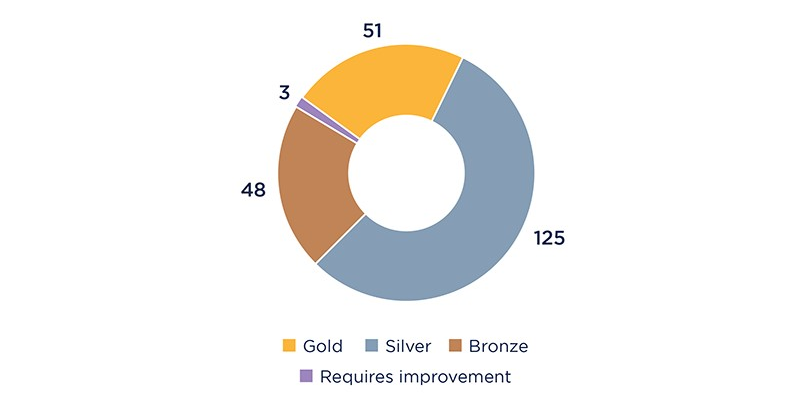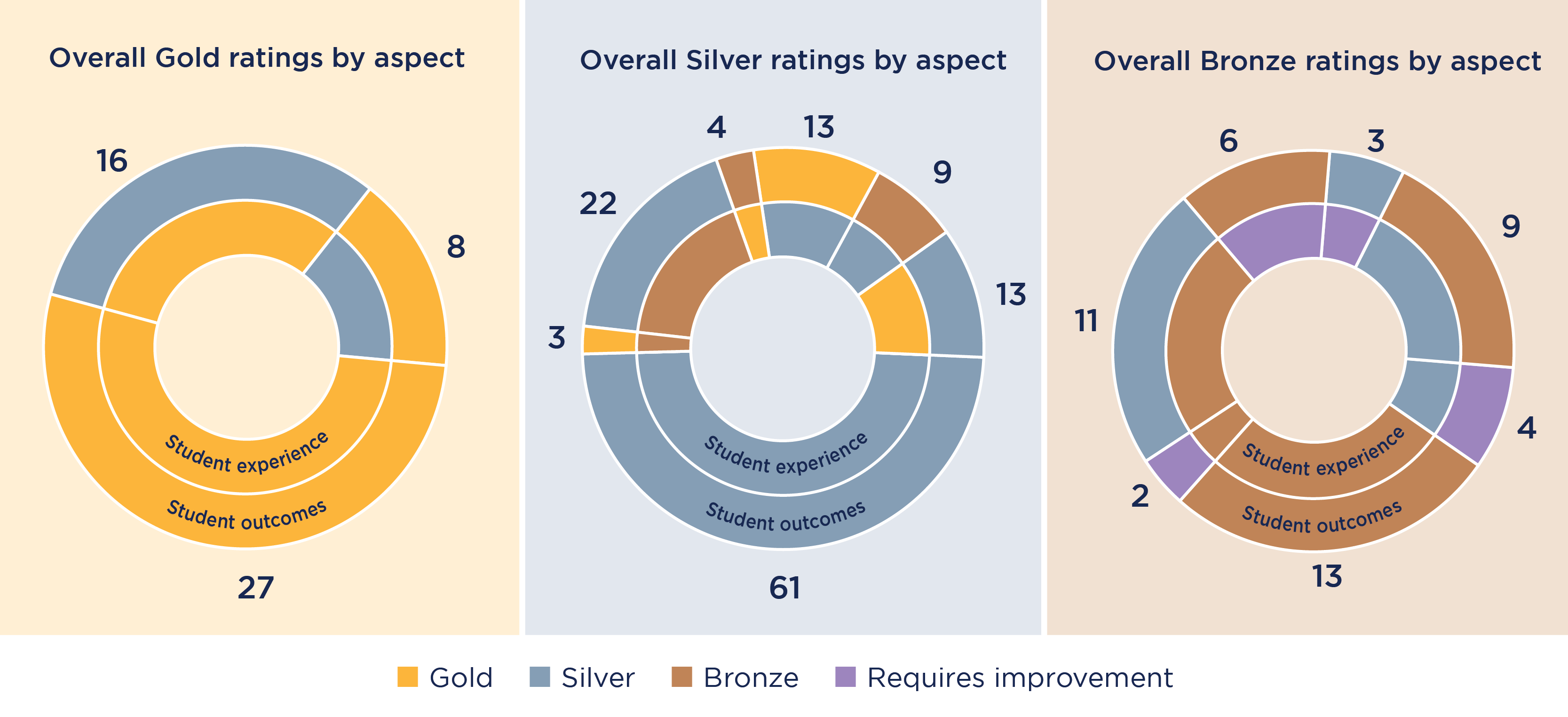The Teaching Excellence Framework (TEF) assessments are now complete and we have published the full set of final outcomes.

In September 2023 we published the ratings for the majority of providers that took part in the TEF 2023. At the time a number of ratings were ‘pending’ while they were being finalised by the panel. The panel has now completed all the assessments and the final ratings are published on our website. Once again, on behalf of the OfS, I would like to extend my thanks to our dedicated TEF panel members whose hard work, expertise and thoroughness has enabled us to reach this important milestone.
Alongside the ratings we have also published the TEF panel’s summary statements, which explain the rationale for each provider’s ratings, as well as the submissions made by providers and their students. This provides a rich resource for exploring good practice across the sector.
The results in full
The complete breakdown of the results shows the extent of excellent teaching and student outcomes right across the higher education sector.
Of all 227 providers that took part:
- 51 providers have been rated Gold for delivering an outstanding experience and outcomes for their students
- 125 providers have been rated Silver for delivering a very high quality student experience and outcomes, and overall are performing well above our regulatory baseline
- 48 providers have been rated Bronze for delivering very high quality – notably above our regulatory baseline – in some of the areas that were assessed
- 3 providers received a ‘Requires improvement’ outcome, where the panel did not find enough evidence of excellence above our regulatory baseline and judged that improvement is required to be awarded a TEF rating.
Figure 1: The number of providers with each overall rating

Each provider received two ‘aspect’ ratings, as well as an overall rating: one for the ‘student experience’ and one for ‘student outcomes’. These give students and providers more information about where the panel found excellent performance, and where there may be room for improvement.
Figure 2 shows how the aspect ratings create a more detailed picture compared to overall ratings alone. For example, looking at the 125 providers rated Silver overall, 61 have a Silver rating for both student experience and student outcomes. The other 64 have some other combination, for example:
- 13 have a Silver rating for student experience, combined with a Gold rating for student outcomes
- 9 have a Silver rating for student experience, combined with a Bronze rating for student outcomes.
Figure 2: The number of providers with each combination of aspect ratings, by overall rating

The final results confirm that outstanding provision is found across the sector. Gold ratings were awarded to all different types of provider (grouped using our provider typology) and to providers across all regions of England.
Table 1: The number of providers with Gold ratings by provider type
|
Provider type |
Number of providers rated Gold overall |
Number of providers rated Silver overall, with a Gold aspect |
|
Low or unknown entry tariff |
11 |
7 |
|
Medium entry tariff |
11 |
7 |
|
High entry tariff |
10 |
8 |
|
Specialist in creative arts subjects |
9 |
4 |
|
Specialist in other subjects |
3 |
3 |
|
Mainly Level 4/5 qualifications |
7 |
4 |
Table 2: The number of providers with Gold ratings by English region
|
Provider region |
Number of providers rated Gold overall |
Number of providers rated Silver overall, with a Gold aspect |
|
East Midlands |
5 |
3 |
|
East of England |
3 |
1 |
|
London |
13 |
13 |
|
North East |
2 |
3 |
|
North West |
5 |
6 |
|
South East |
5 |
0 |
|
South West |
9 |
2 |
|
West Midlands |
5 |
2 |
|
Yorkshire and the Humber |
4 |
3 |
What else do the TEF outcomes tell us?
Beyond the ratings, we have published additional information for each provider – the provider and student submissions, and a summary statement from the panel. These statements set out the panel’s reasons for the ratings, including the panel’s view of each ‘feature’ that formed part of the assessment. This pinpoints what the panel found to be excellent – or where there is room for further improvement. For example, when rating the ‘student experience’ aspect, did the panel find evidence of outstanding academic support, or outstanding use of learning resources, and was this consistent across the provider’s subjects and student groups?
The provider submissions set out the diverse ways in which providers have sought to deliver the best educational experience and outcomes for their students, within their contexts. The student submissions give an independent view from the provider’s student body.
This additional information is a rich resource that providers can use to explore good practice and inform their own enhancement work. It also provides more detail for prospective students if they want to understand more about a provider’s ratings.
There is also scope for analysing this bank of information to gain insights into the range of providers’ approaches to delivering excellence, how students are engaged in this, and to look for trends or themes across the sector.
For example, in the 2023 TEF providers were asked to set out what ‘educational gains’ they intend their students to achieve, beyond our measures of continuation, completion and progression. So, what types of knowledge, skills, personal attributes or other gains did providers set out? How do they support their students to achieve these gains, and how do they know if they’re succeeding? We have commissioned work to explore these questions, based on an analysis of the TEF submissions and panel findings.
Given the central aim of the TEF is to promote improvement, we’ve also commissioned analysis of the ways in which providers strategically manage change and quality enhancement, and what approaches the panel found to be effective. We expect to publish both reports in the spring.
What’s next?
With the results complete, we are now planning our evaluation of the TEF 2023. We have already received useful feedback from higher education representative groups and our visits to universities and colleges. We’ve been pleased to hear about the positive effects TEF is having on driving improvements for students, and we’ve heard ideas about how the TEF could be improved.
Throughout 2024, we will continue to seek feedback from universities, colleges, panel members and student representatives to understand how far the TEF is achieving its policy aims, and what improvements can be made for the next exercise. We will also explore how prospective students have been using the TEF ratings to inform their choices.
The 2023 results shine a spotlight on the excellence that’s been found in a diverse range of higher education providers. Although it takes place every four years, we intend that the TEF promotes continuous improvement – before, during and after each assessment exercise. Having prepared their TEF 2023 submissions and received detailed feedback from the panel, providers are no doubt looking ahead to the next TEF. I expect they will be reflecting on their strategies and performance, planning or implementing further improvements, and engaging with their students. We hope the additional information and analysis – and the case studies published previously – will encourage and support this.

Comments
Report this comment
Are you sure you wish to report this comment?